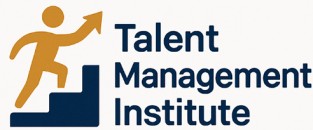
Defining a Backfill Position
Understanding What a Backfill Position Entails
In the realm of talent management, the concept of a backfill position often emerges as a crucial element within an organization's recruitment and employee management strategies. At its core, a backfill position is created to replace an employee who has vacated their role, either temporarily or permanently. The backfill process ensures that business operations continue smoothly by filling gaps in the workforce. This role-filling process can be critically important when an employee takes on a new position within the company, is on leave, or exits the organization entirely. Organizations often employ succession planning and cross-training techniques to maintain seamless transitions and ensure that top talent is available to meet these needs efficiently. For many companies, employing a backfill strategy is a best practice to safeguard team dynamics and maintain productivity. However, the hiring process for such positions can vary depending on the organization’s specific needs and the management software tools they utilize to track and manage their talent pools. Overall, the management of backfilling positions requires a delicate balance between immediate recruitment needs and long-term talent planning. Understanding these basic principles lays the foundation for effective backfill management, addressing challenges, and enhancing team cohesion as outlined in subsequent discussions on the topic.The Importance of Backfill Positions
The Significance of the Role in Organizational Success
Backfill positions hold a pivotal role in ensuring the smooth operation of an organization, especially during transitional periods caused by employee departures or role changes. When a key team member vacates their position, be it temporarily or permanently, it becomes imperative for hiring managers to have a strategy in place to minimize any potential disruption. An effective backfill process involves strategic planning and often starts with a clear job description that outlines the responsibilities and skills required for the vacant position. This helps tailor the recruitment process, aiming for candidates who can seamlessly step into the role. Proper backfill management not only supports succession planning but also strengthens a company’s resilience against unforeseen challenges. For organizations, a well-executed backfill strategy is crucial to retain top talent and ensure continuity of operations. The absence of an efficient backfill strategy can lead to prolonged vacancies, stressing other team members and possibly impacting employee morale and productivity. In addition, a robust approach can aid in cross-training, fostering a flexible team where skills are not confined to a single role or individual. Furthermore, aligning backfill strategies with long-term goals can lead to improved talent management and employee satisfaction. Leveraging management software to track skills and potential within the organization can be beneficial in identifying the best fit for a position backfill, ensuring that the hiring aligns with the organization’s greater objectives. Through these best practices, companies can not only manage immediate challenges but also prepare for any future organizational shifts.Challenges in Managing Backfill Positions
Overcoming Challenges in Managing Backfill Positions
In the dynamic landscape of talent management, backfilling positions often presents several challenges that companies need to navigate adeptly. These challenges can significantly impact the organization's ability to maintain seamless operations and retain top talent in the workforce. One of the key issues is the time-sensitive nature of the backfill process. Hiring managers must ensure the recruitment process is agile yet thorough, allowing them to promptly recruit skilled candidates without compromising on quality. This is crucial for minimizing any disruption caused by a vacant position and upholding organizational performance. Additionally, crafting an accurate job description is another critical challenge. Companies must define the role clearly and align the expectations of the employee with the organization's objectives. This step is essential to attract the best candidates who possess the necessary skills for the job while fitting well within the team dynamics. Another common hurdle is the balance between short-term fixes and long-term solutions. While cross-training current team members to fill gaps temporarily may seem effective, it doesn't always address long-term needs or contribute to succession planning. Therefore, organizations must develop a robust backfill strategy that integrates both immediate needs and the long-term growth of the talent pool. Furthermore, adapting to changes within team dynamics can be complex. A new team member in a backfilled role may influence team harmony and efficiency. It’s crucial for managers to facilitate a smooth integration process, leveraging management software and best practices to foster collaboration and communication among employees. Efficient management of backfill positions involves a deliberate approach that recognizes and mitigates these challenges. Organizations must continuously refine their recruitment and talent management processes to better anticipate and address such complexities, ensuring they maintain a competitive edge in securing and retaining top talent.Strategies for Effective Backfill Management
Maximizing Success Through Strategic Backfill Management
Effectively managing backfill positions requires a strategic approach to ensure not only the immediate need is addressed, but long-term goals are met as well. An effective backfill strategy involves several key practices that can guide hiring managers and organizations in optimizing the backfill process.- Develop Clear Job Descriptions: Start by thoroughly understanding the role and responsibilities of the position that needs backfilling. Craft clear job descriptions to ensure prospective employees have a solid awareness of the expectations.
- Implement Succession Planning: In order to maintain the smooth operation of the team and minimize disruptions, organizations should incorporate succession planning. By identifying potential talent within the organization who can take over key positions, the transition is more seamless.
- Utilize Cross Training: Establish cross-training among team members to build a versatile skill set and prepare employees for potential role shifts. This not only helps in short-term role fulfillment but also develops a resilient workforce ready for dynamic challenges.
- Leverage Management Software: Utilizing talent management software can streamline the recruitment process and track employee skills, ensuring the best candidates are quickly identified for backfilling positions.
- Prioritize Top Talent Recruitment: When addressing a position backfill, aim to attract and retain top talent. Focus on candidates who not only meet the job requirements but also align with the company's culture and future objectives.
Impact on Team Dynamics
Influence on Team Synergy and Collaboration
Backfill positions can have a significant influence on team dynamics and collaboration. When backfilling occurs, it may temporarily disrupt established workflows within the team. The introduction of a new or transitioning team member brings fresh perspectives, but can also cause confusion if not managed properly.
Teams accustomed to a specific way of working might find it challenging when a backfill role introduces different approaches or disruption to the existing dynamic. However, if handled expertly, this transition can invigorate creativity and lead to enhanced problem-solving strategies. Communication within the team becomes crucial during this process.
Adopting best practices in talent management, such as thorough onboarding, can ensure that new employees in a backfill position quickly assimilate. Cross-training existing team members is also beneficial, as it provides continuity and resilience in the face of evolving team structures.
An efficiently managed backfilling process can aid in succession planning, empowering the organization with a pool of versatile team members ready to adapt to strategic shifts. Hiring managers should prioritize aligning the recruitment process with long-term organizational goals, shaping a backfill strategy that not only fills vacant positions quickly but also enhances team morale and cohesion over time.



